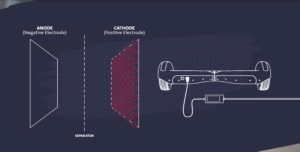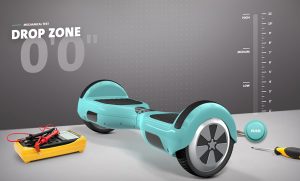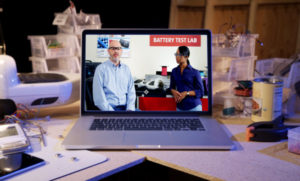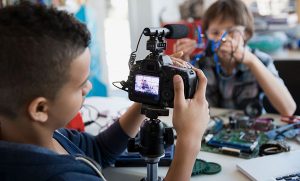Module Introduction
From cell phones to laptops and electric cars to hoverboards, portable electrical power and lithium ion batteries are part of students’ lives every day. They’re also the result of scientific inquiry and engineering.
This UL Xplorlabs module encourages students to use scientific inquiry to engage with portable electrical power, teaching them how batteries convert energy, introducing the phenomenon of thermal runaway and inspiring them to think like a scientist to identify essential construction and performance requirements that address the inherent risks a product could present. Students will develop useable knowledge to explain real-world phenomena by learning how to define a problem, build a solution, test a design and analyze and extend results.
Module
Portable Electrical Power
Age Group
Middle School
Category
Electrical Power
Completion Time
1-2 Class Periods
Downloads
what’s in the module?
Each element of the module has been designed to supplement and enhance teaching methods whether they are used in full or in part, in the order below or in order of your choosing. For the best experience, we recommend beginning with the Interactive Video.
-

Interactive Video
Video, 30 minutes
An engaging interactive exploration of portable electrical power and the phenomenon of thermal runaway. Included in the video are four UL lithium ion battery testing demonstrations. (Includes awesome explosions.)
-

Xtreme Testing
Interactive Experience, 30 minutes
A simulated set of tests that put your students in the role of safety scientist, dropping and overcharging a hoverboard under various conditions to evaluate how well it holds up to the stresses and abuses of everyday life.
-

Hands-On Classroom Xperiments
Independent Experiments, Class Period (x3)
Investigate energy expressed as heat, evaluate materials according to the UL Safety Standards process and build a safe, durable hoverboard with these three hands-on experiments. Each experiment can stand alone, but we recommend completing all three.
-

Xtend the Learning
Classroom Challenges
Keep the learning going with creative classroom challenges.
connections to Next Generation Science Standards
The Portable Electrical Power module corresponds to the following Next Generation Science Standards (NGSS):
MS-ETS1 Engineering Design
MS-PS3 Energy
Common Core State Standards Connections
For a link to the National Research Council’s definition of Science and Engineering Practices, click here.